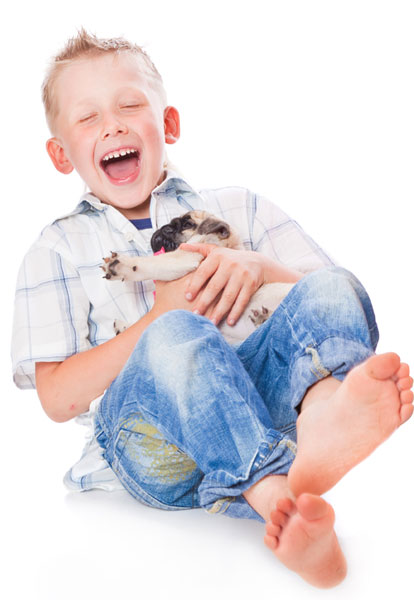If you see this icon in a fact sheet summary you may be dealing with a life threatening issue. Consult a veterinarian immediately.
Use our webform to ask a question or book an appointment

ENTROPION
Entropion is a condition in dogs, and occasionally in cats, in which either the upper or lower eyelid is inverted. When an eyelid is inverted it turns inward toward the eye and eyelashes and hair will irritate the cornea (the clear, front part of the eye) causing the signs of entropion. These vary in duration and with the severity of the condition, but can range from excessive tear production to a mucoid discharge with pigmentation or ulceration of the cornea. In severe cases corneal perforation (rupture of the eye) may result. Secondary infection of the eye is also common.
SEVERITY: Moderate. Good prognosis.
There are two forms of entropion, primary (anatomical) and secondary (spastic).
Primary entropion is the result of a a structural abnormality (birth or genetic defect) of the eyelid/tarsal plate and is usually seen in dogs with short noses and extra folds of skin around the nose and face such as Chow and Shar Pei dogs, or in any breed with heavy facial skin, including the Bloodhound, Newfoundland, Mastiff, or Saint Bernard. Primary entropion is usually found in young dogs, less than a year old, and can be seen in pups as young as 2-6 weeks of age.
Secondary entropion is generally found to be the result of excessive blinking associated with an eye irritation — a foreign body in the eye, extra hairs on the inside of the eyelid, or conjunctivitis — and can be seen in dogs of any age.
Both primary and secondary Entropion are diagnosed by physical examination.
Primary entropion must be surgically corrected. Young dogs with the condition have sutures placed to hold the eyelid everted in the correct position, until the puppy is around 6 months old and of a more mature size. In some individuals these everting sutures may be the only treatment needed but in many cases the sutures will need to be repeated if entropion recurs when sutures are removed or they loosen. Using this method and waiting until the dog is more mature gives the best chance of success for the more permanent surgery that follows.
Second phase surgery is undertaken once the puppy reaches a more suitable age/size, and also for mature dogs who present with chronic entropion. During this procedure skin is removed to permanently evert the eyelid edge to the point where it sits normally on the eye. The amount of skin to be removed needs to be finely judged to prevent the eyelid being everted and not correctly resting on the cornea. Surgeons will err on the side of caution and remove less rather than more skin so the procedure may need to be performed twice to achieve the optimum outcome.
The procedure is fairly routine and the outcome, in the vast majority of cases, is good.
Treatment of secondary entropion is simpler, involving correction of the underlying problem, for example, by removing the foreign body causing the entrpion. In some cases, once the primary problem has been resolved, surgical correction will be needed to prevent a recurrence, particularly in breeds predisposed to primary entropion.
In both primary and secondary conditions the treatment is fairly straightforward and the long term prognosis is excellent.
MORE DISEASES OF DOGS
DOGS: ADVICE FOR EMERGENCIES


